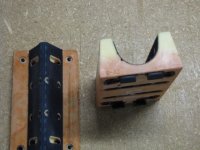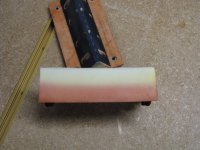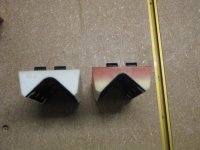Michael Kellough
Member
Buy the profiled pads only as you need them because the foam decays over time.
I bought the sander and several of the pads at east 5 years ago and the foam on all the pads is breaking down.
It is sticky and crumbly to the touch.
I thought I was lucky to find I had an unused pad of the exact radius I needed today.
It was still in the unopened bag so I hoped it wouldn't be as far gone as the open pads.
It still looked good. It hadn't turned yellow from oxidation. But I used up only three pieces of abrasive
before half the profile broke off the backing.
So, don't stockpile the pads. Buy them only as needed.
I bought the sander and several of the pads at east 5 years ago and the foam on all the pads is breaking down.
It is sticky and crumbly to the touch.
I thought I was lucky to find I had an unused pad of the exact radius I needed today.
It was still in the unopened bag so I hoped it wouldn't be as far gone as the open pads.
It still looked good. It hadn't turned yellow from oxidation. But I used up only three pieces of abrasive
before half the profile broke off the backing.
So, don't stockpile the pads. Buy them only as needed.



